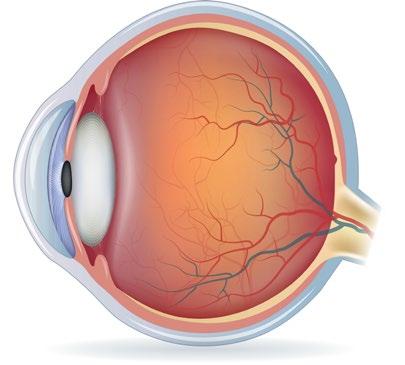
A cataract is an opaque cloudy area that forms in the lens. It is located in the center of the eye, behind the pupil and iris. The lens functions like a camera, focusing light rays onto the retina, a layer of light-sensitive cells in the back of the eye. It is through this process that the brain sees the world. But as a person gets older, the amount of time the lens has to work as a lens becomes cloudy.
The most common type of cataract is the posterior capsular type, which forms more quickly than other types. Congenital cataracts develop in babies during their first year of life. Secondary cataracts are caused by disease or certain medications. Among these conditions are glaucoma and diabetes, which are known to cause cataracts. Steroids, such as prednisone, can cause cataracts as well. A person who experiences a trauma to the eye can develop a lens with a bifocal.
A cataract surgery is a safe and successful procedure. About 95% of patients experience improved vision after the surgery. A cataract surgery is typically an outpatient procedure, with a local or topical anesthetic. Patients need to avoid heavy lifting for the next two weeks and use eye drops in the operated eye. They will be monitored closely during the post-surgery period. A person can also have a second eye implanted or a new prescription for glasses.
If a patient is experiencing symptoms of cataracts, a doctor may recommend a treatment option. This is often an outpatient procedure with very low risk. It is an outpatient procedure, performed under topical or local anesthesia. After the surgery, a patient must avoid strenuous activities for two weeks, and must continue to use eye drops in the eye operated. After the procedure, the patient will be sent home and rechecked frequently.
A patient should also consider the cost of the surgery. Some people opt for day care cataract surgery, which is less invasive than a traditional cataract surgery. This method is a common choice for those with large-size cataracts. However, it requires a larger incision and is expensive. Many patients find that a smaller-sized incision is more affordable. The process is also more convenient for those with small eyes. The recovery time is faster.

The process of cataract surgery is fairly straightforward. It takes about 15 minutes for each eye. Most patients report minor discomfort, but some people experience more pain than others. After cataract surgery, the lens capsule will be polished by a laser to remove the secondary healing film. The procedure is not painful and requires no downtime. It has become one of the most popular procedures in the United States. The procedure is one of the most common operations in the country and affects 3.5 million people.
The entire lens is contained within the lens capsule, which is a thin layer of tissue inside the eye. Over time, protein and dead cells accumulate in the lens and form a cataract. It may start out as a small, opaque spot that grows over time. As the cataract becomes larger, it affects the ability to see clearly. Because light is scattered, the vision of the patient is not clear. During this process, the cataract surgeon will remove the entire lens and capsule, which will make it impossible for the patient to see the surroundings around them.
Surgical procedures can be performed both on the lens capsule and on the eye itself. The surgeon will first remove the lens capsule and then perform surgery to remove the clouded lens. Once the lens is removed, the operation will be more complex and invasive. With age, the process of cataract removal becomes more complicated and can cause astigmatism. Unlike other procedures, cataracts cannot be prevented or cured. However, it can be prevented by eating the right foods and avoiding cigarette smoke and excessive alcohol consumption.
The operation is a quick and painless procedure that takes about 20 minutes. It is performed under local anesthesia and is very safe. The procedure is often followed by several days of recovery. The patient may then need a prescription for glasses or contact lenses. A new cataract can cause complications such as astigmatism and may require surgery. Therefore, you can find out more information about the treatment or therapy on the site https://www.scib.co.th/
and choose the right one for you. This is vital to your health.